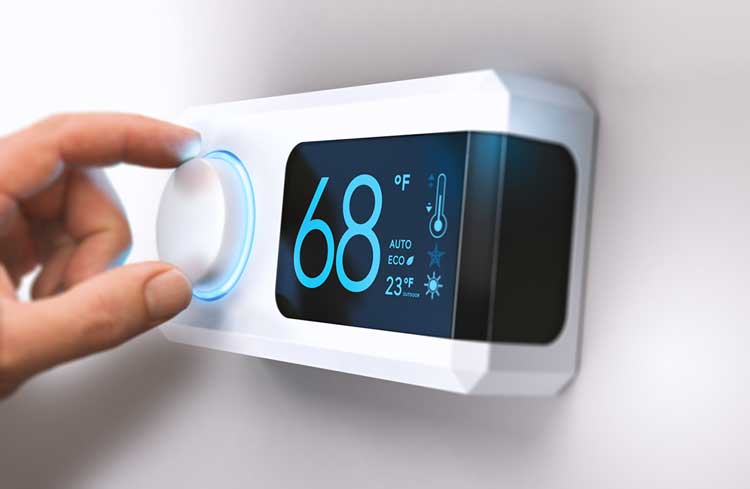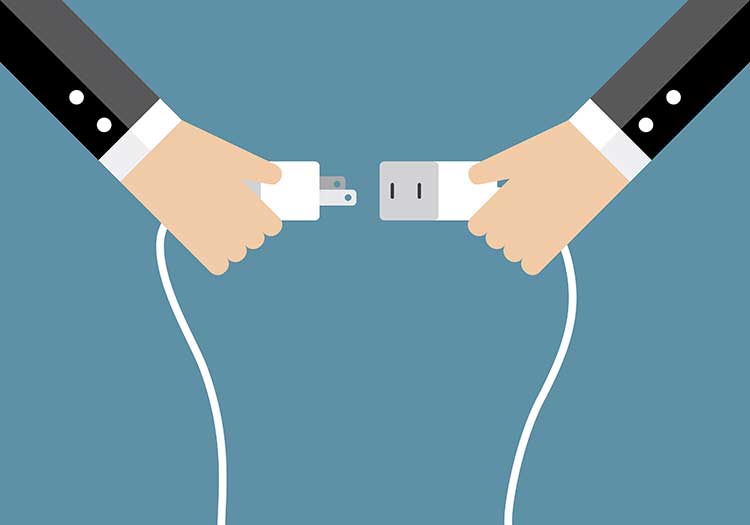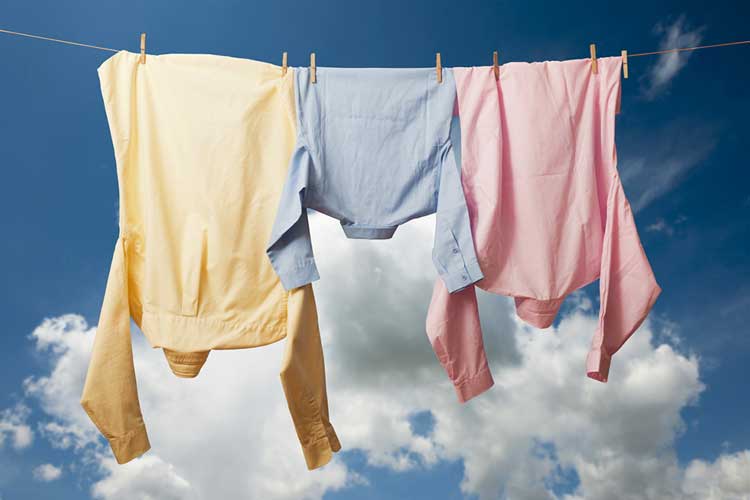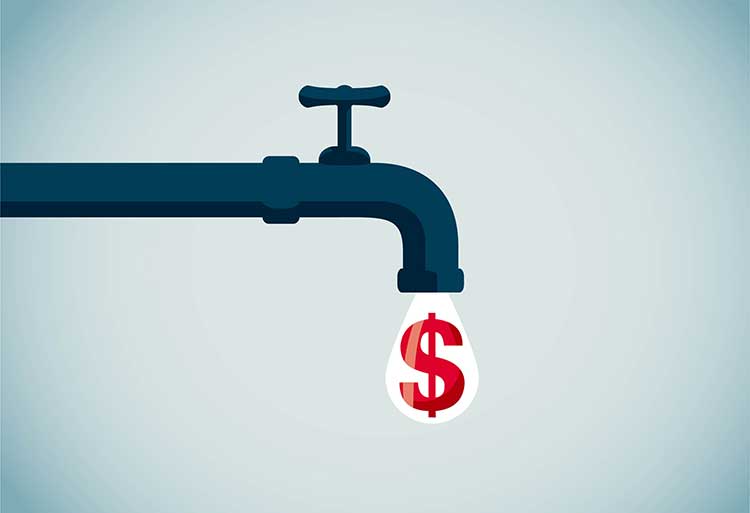Small Steps, Big Impact: Save Energy by Making These Free or Inexpensive Changes
Last updated November 2024

Making simple repairs or improvements and changing wasteful habits will yield enormous energy savings for most families.
Because heating costs is by far the biggest source of home-energy expense in the Puget Sound area, most of our advice focuses on cutting that consumption.
Seal it Up
Many homes passively waste lots of energy via holes, cracks, and gaps that let cold air in and warm air out in the winter. One little leak might not seem like much, but the cumulative effect of several can add up to the equivalent of leaving open a small window. Finding and plugging leaks costs very little money yet yields significant savings.
In our section on insulation improvements, we detail ways to find and fix major leaks. Most occur where different building materials meet—brick and wood siding, foundation and walls, and between the chimney and siding. Other common problem areas are around windows and doors; mail slots; points of entry for electrical and gas lines, cable/internet wiring, and phone lines; outdoor water faucets; where vents pass through walls; cracks or gaps in siding, stucco, masonry, and all foundation materials; and around window air-conditioning units.
Consider hiring an energy auditor to identify problem areas; there’s a federal tax credit and other incentives that can help pay for their services. But you can spot most leaks on your own and fix them:
- Use caulk to seal any cracks or gaps measuring less than one-quarter inch wide and polyurethane foam sealant for larger ones.
- Install weatherstripping around windows and exterior doors.
- Add sweeps to the bottoms of entry doors.
- Prevent drafts around outlets and light switches located inside exterior walls by adding insulating receptacle gaskets, which cost less than $1 each.
- If you have window AC units, remove them during the winter, or insulate them from the outside with an AC cover ($10-$40). During summer, install units so they fit tightly within windows.
Combined, these measures can save five to 20 percent of your heating costs.
Cost: $25-$1,500+, depending on scope of work and what you DIY. There’s a federal tax credit of up to $1,200 per year for energy audits and air-sealing improvements, plus a rebate program for customers of Puget Sound Energy. An additional rebate of $800 or $1,600 (depending on income) will be available to most households once the federal government’s new “High-Efficiency Electric Home Rebate” program kicks off. Click here for more info on tax credits and rebates.
Our energy savings: $154 per year by installing weatherstripping and reducing overall air leakage by 50 percent.

Dial Down the Thermostat
You’ll realize big-time savings if you can handle a change in climate. If you—or your cohabitants—refuse to chill out, at least use a programmable thermostat.
For our sample home, setting the thermostat at 68 degrees instead of 70 during winter and 74 instead of 73 during summer saved about eight percent per year on heating and cooling costs.
Cost: Free.
Our energy savings: $109 per year.
Fix Fireplace Flues
Chimneys are designed to pull smoke upward and out of homes. As long as the temperature outside is different than inside your house, this draft continues, pulling out air that you paid to heat, and wasting one to three percent of your energy bills.
When you’re not using a fireplace, make sure to tightly close its flue damper. Still, even closed flues are notoriously leaky; seal yours completely with a chimney plug—basically a balloon that inflates to fill up the space between the firebox and the damper.
Cost: Plugs cost less than $75.
Our energy savings: $14-$43 per year.

Use Efficient Lighting
Using efficient LED lights instead of incandescents will save an average U.S. household about 30 to 40 percent off lighting costs each year.
For most uses, you’ll want bulb-shaped, A-type LEDs. But they sometimes don’t cast light evenly in all directions, so look for omnidirectional bulbs for lamps or shaded light fixtures.
Cost: Energy-efficient bulbs sell for only a few dollars more than less-efficient incandescent ones.
Our energy savings: $57 per year.
Turn Down the Water Heater
Lowering your water heater’s thermostat from 140 degrees to 120 will cut its energy use by 10 to 15 percent. Although 120 degrees is sufficiently hot enough to prevent bacterial growth, if someone in your household has a suppressed immune system or chronic respiratory disease, keep it at 140 to be safe.
Cost: Free.
Our energy savings: $22-$37 per year.
Insulate Older Water Heaters
Wrap your water heater in a fiberglass insulating blanket to save about 10 percent of its energy usage. Skip doing this if your model was made in the last 15 years or so, as it likely already came with efficient foam insulation. Not sure if you need additional insulation? If the outside of your heater feels warm to the touch, a blanket will benefit you.
Cost: $25-$40.
Our energy savings: $0-$25 per year.

Replace HVAC Filters
A dirty filter makes your system work harder than it should, reducing performance and energy efficiency—plus it could spread dust. Switching out dirty filters will save less than two percent of heating costs but it’s an important maintenance task.
Check your filter monthly until you see how quickly it gets dirty at different times of the year. When a filter has a matting of dirt, replace it (usually four to six times a year). Click here for more advice on maintaining your system, plus ratings of local HVAC contractors for quality and price.
Cost: $5-$40 per filter, or $25-$200 per year if you change it five times.
Our energy savings: $10-$21 per year.
Deal with Ductwork
According to the U.S. Department of Energy, leaky ducts can add 20 percent or more to a home’s heating bills. Check for holes or gaps in exposed ductwork in any unfinished attic, crawlspace, and basement, and seal them with mastic tape or HVAC foil tape. Also seal gaps where ductwork connects to registers.
Don’t worry about having your ducts regularly cleaned; despite claims from cleaning companies, very few homes need their services, and it likely won’t impact energy usage.
Cost: $30-$50 (it’s an easy DIY job). Puget Sound Energy and Snohomish County PUD offer generous rebates for duct-sealing work.
Our energy savings: $46-$81 per year.
Insulate Poorly Located Pipes and Ducts
If you have a crawlspace or unheated basement, check whether any furnace ductwork or pipes that supply hot water run through it. Wrap pipes in foam insulating sleeves; ask HVAC contractors for advice on the best way to insulate ductwork. This work isn’t needed in most homes, but if your ducts run through an uninsulated area you’ll likely save five to 15 percent of heating costs.
Cost: Less than $20 for materials to insulate pipes; $100-$400 to hire someone to insulate ductwork.
Our energy savings: $19-$31 per year.

Unplug
Most plugged-in devices consume electricity even when not in use. Our sample family’s TVs, computers, cell-phone chargers, and other assorted tech and small appliances cost $180 per year to power. So yank the cord to that DVD player and other electronics you rarely, if ever, use. Check the settings for other gadgets to see if they have low-power standby options.
An even better option is to buy smart power strips, which automatically cut off juice to plugged-in things that haven’t been used in some time. Smart power strips also let users switch off electronics remotely via phone or computer.
Cost: Free; decent smart power strips cost less than $40 each.
Our energy savings: $14-$36 per year.
Make Your Windows Work for You
When it’s warm outside, close curtains and blinds to reduce heat from the sun. When it’s cold, open curtains for free warmth—but keep curtains closed to block drafts if your windows don’t get rays. Thermal shades provide the most benefit. Make sure curtains don’t block HVAC vents. Click here for our advice on buying window treatments and price comparisons of local dealers.
Cost: Free if you already have window treatments; $100-$500 per window for professionally installed blinds (be sure to shop around for the best price).
Our energy savings: $12-$38 per year.

Don’t Overdry Clothes
Use trial-and-error to figure out how long your dryer takes to dry loads so you don’t run it longer than necessary. Don’t do small loads, but don’t overstuff it, either. If your dryer has a cool-down setting it will finish drying clothes using remaining heat in the drum at the end of the cycle, while expending very little energy. Before drying, use the highest spin setting on your washer to remove maximum moisture. By cutting drying times, you can likely save 20 percent of your appliance’s energy usage.
Option B: Go old school and use drying racks or an outdoor clothesline for free evaporation.
Cost: Free.
Our energy savings: $18-$46 per year.
Wash Clothes in Cold Water
According to Energy Star, as much as 90 percent of the energy used to wash clothes comes from heating water. In Consumer Reports’ tests, cold water sufficiently cleans most loads.
Cost: Free.
Our energy savings: $25-$37 per year.
Get Rid of Extra Fridges and Freezers
Many people have extra refrigerators or freezers to handle overflow items. But extra storage comes at a steep price—especially if your overflow fridge or freezer is old: Most fridges sold in the last 10 years cost about $50 a year to run; 30-year-old models about $100 a year; and your parents’ indestructible 50-year-old one can drain away more than $150 a year.
Cost: Free; some communities and utilities offer recycling incentives and/or free pickup.
Our energy savings: $100 per year.

Don’t Be a Drip
It takes significant energy to treat water and pump it to your home. The EPA estimates that running your faucet for five minutes uses about as much energy as keeping a 60-watt lightbulb burning for 14 hours. And if you paid to heat wasted water, you’re buying more gas or electricity than necessary.
Click here for simple, often no-cost ways to conserve H2O, from eliminating obvious and hidden leaks to installing low-flow faucets to harvesting rain to water landscaping.
Cost: Free.
Our energy savings: $25 per year, plus lower water bills.
Embrace the Dishwasher
Consumer Reports’ tests indicate most newer dishwashers clean well if you skip a pre-rinse or scrub. Dishwashers also use less water than handwashing, which means your water heater consumes less gas or electricity. Just scrape off leftovers and load ’er up.
After your dishwasher finishes a load, skip the drying cycle, and simply open its door. The remaining heat inside will speed evaporation, rather than consuming electricity to generate heat to do that job.
Cost: Free.
Our energy savings: $25-$35 per year.
Turn Out the Lights!
Summon ultimate Dad Energy and wander around your home yelling, “Who left this light on?!” Annoying your family will help the environment.
You can install motion-detecting switches that automatically turn off lights when no one is in the room—or if you sit still for too long. Occupancy sensors are less frustrating: They turn on lights when someone enters and off when they leave.
Cost: Free, or $15-$40 for each occupancy sensor.
Our energy savings: $20-$40 per year.


